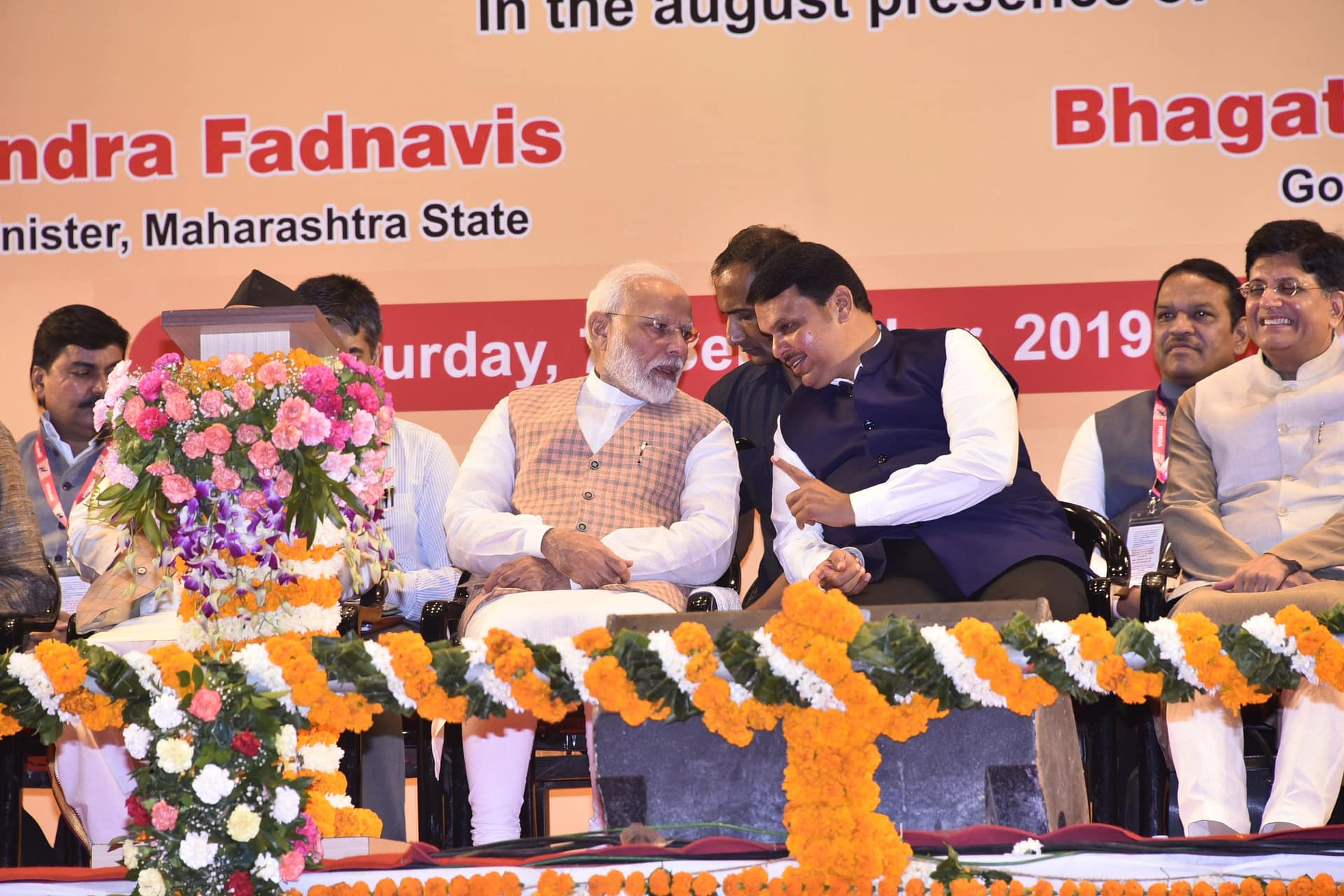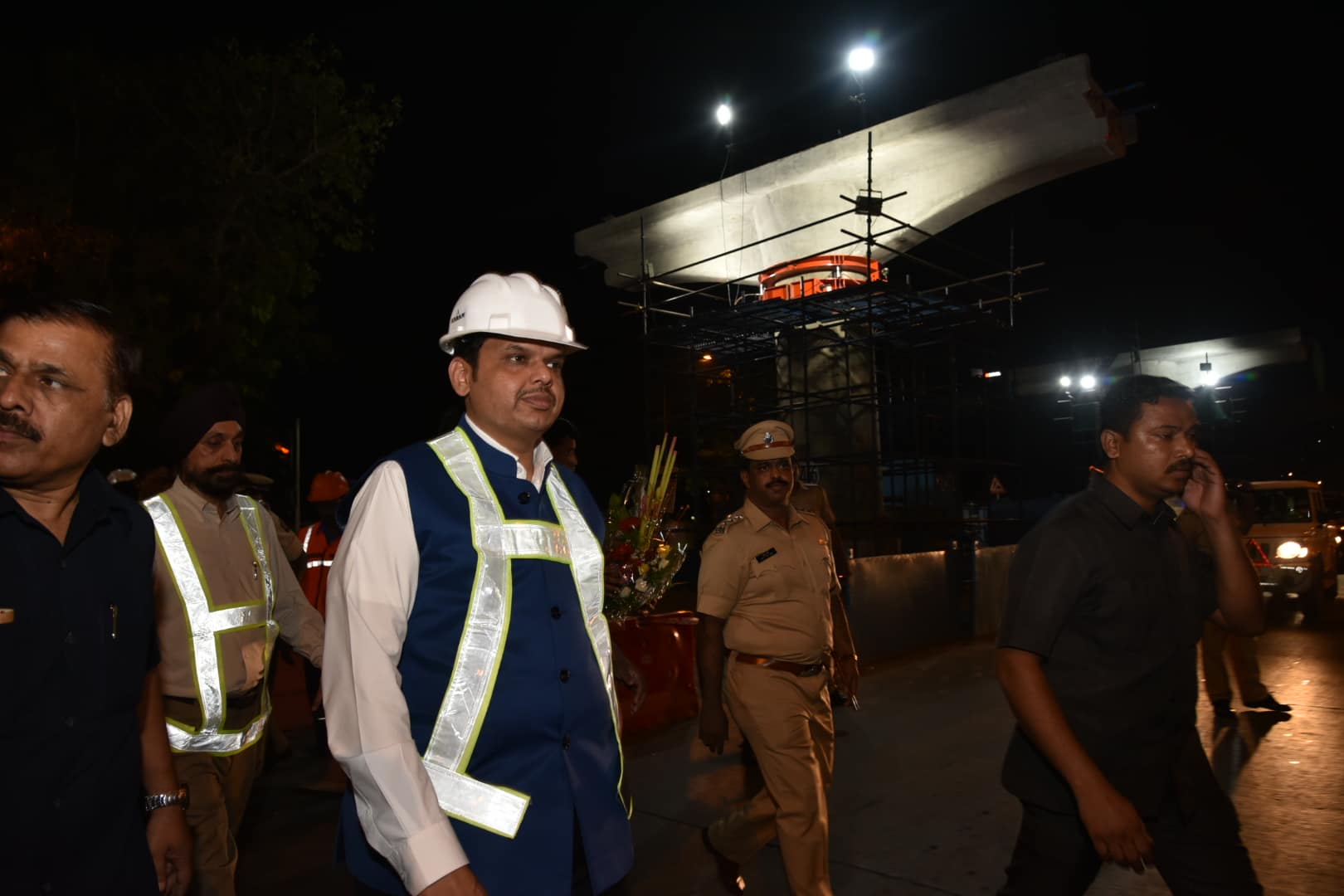The Mumbai Metropolitan Region (MMR) is among the world’s largest and most populous metropolises. Known for its multiple eminences, such as the financial capital of India, the most renowned film production center, and a prominent MSME hub, MMR receives a daily influx of hundreds of people from all corners of the country. While the city’s internal communication is still ruled by the suburban train network and BEST bus services, the Metro rail network has made rapid inroads, providing a mass rapid transit (MRT) facility to its residents, thanks to the constant developmental push by the visionary leader Shri Devendra Fadnavis during his tenures as the CM, the opposition leader, and currently the Dy. CM.
Metro rail is a crucial component of the modern transportation system and is featured in most major cities worldwide. Not only does it help thousands of passengers reach all corners of the city and in-between places conveniently, comfortably, and very economically, but it also provides pollution-less living conditions, a priority for the urbanites. However, metro rails are big-budget projects and often involve political, legal, and other challenges. The Fadnavis government showed a strong determination, dealt with many obstacles to expand the Mumbai metro in record time, and launched metros in different cities.
The development era in Maharashtra (2014 -2019) – multiple metro corridors in major cities
After swearing in as the CM in October 2014, Devendra Fadnavis put special emphasis on making Maharashtra a top investment destination through rapid urban development, which included setting up a metro rail network in all major cities of the state. While the Mumbai metro started operating during his tenure, several new corridors for an expanded network spanning over 337 km. were proposed, with some of them even started running. The Nagpur and Pune metros also started their operation during his chief ministership.

The hallmark of the Devendra Fadnavis government is the speed of execution of developmental projects, which is in sharp contrast with other regimes. For example, the first metro project in Maharashtra was on the Versova-Andheri-Ghatkopar route. This project was approved by the state government in 2004. However, its construction started in 2008, and took another six years before the Mumbaikars could finally travel in Metro. But with Narendra Modi as PM and Devendra Fadnavis as CM, Mumbai Metro leaped to become a large network of 14 corridors, removing all obstacles and attracting massive investments.
Mumbai Metro: current status at a glance

The main objective of the Mumbai Metro project is to reduce inter-city traveling time and exhaustion by providing a network of shorter routes of MRT services across the city in many directions and connecting to suburban train circuits at key points. It’ll also reduce the loads on the local trains and roads, cutting down carbon emissions. Here is a quick update on the current status of the Mumbai Metro lines.
Currently 4 lines are operational:
- Versova to Ghatkopar (Line 1) with 12 stations spanning 11.4 km.
- Dahisar(E) to DN nagar (Line 2A) with 17 stations spanning 18.6 km.
- Aarey colony to Bandra-Kurla complex (Line 3, phase 1, 1st underground line of Mumbai Metro) with 10 stations spanning 12.69 km.
- Dahisar(E) to Andheri(E) (Line 7) with 14 stations spanning 16.5 km.
8 corridors are under construction
- DN nagar to Mandale (Line 2B) with 22 stations spanning 23.64 km.
- Cuffe Parade – BKC – SEEPZ – Aarey colony (Line 3) with 27 stations spanning 33.50 km.
- Wadala to Kasarvadavali (Line 4) with 32 stations spanning 32.32 km.
- Kasarvadavali to Gaimukh (Line 4A) with 2 stations spanning 2.88 km.
- Thane – Bhiwandi – Kalyan (Line 5) with 17 stations spanning 24.95 km.
- Swami Samarth nagar to Vikhroli (Line 6) with 13. Stations spanning 15.18 km.
- Andheri(E) to CSI airport (Line 7A) with 2 stations spanning 3.17 km.
- Dahisar(E) to Mira Bhayander (Line 9) with 8 stations spanning 11.38 km.
1 corridor approved
- Gaimukh to Shivaji Chawk in Mira Rd. (Line 10) with 4 stations spanning 9.2 km.
5 new corridors proposed
- CSI Airport to NMIA (Line 8) with 7 stations spanning 35 km
- Wadala to CST (Line 11) with 10 stations spanning 12.7 km.
- Kalyan to Taloja (Line 12) with 17 stations spanning 20.7 km.
- Mira Road to Virar (Line 13) with 20 stations spanning 23 km.
- Kanjurmarg to Badlapur (line 14) with 40 stations spanning 45 km.
Once completed, the Mumbai Metro network is expected to reduce 35% road traffic in Mumbai, which will considerably reduce the traffic stress the city is known for. Only Line 3 will be underground, and all the rest will be elevated.
Integrated Ticketing System
The Integrated Ticketing System (ITS) is a smart way to reduce the commuting time and stress for people commuting long distances in Mumbai via different modes of transport. They need not queue up or pay ticket charges in cash multiple times a day.
Devendra Fadnavis as the CM had taken the first initiatives to implement the ITS through a collaboration between the MMRDA and railways, as the same facility is in place in many advanced cities in the world. He brought all the stakeholders including the then Railway Minister Shri Piyush Goyal on the same page to take this forward. The main concept of ITS is that with a single ticket, you can commute using public transport in Mumbai, whether by bus or the metro, or by private taxi services.
Congress-NCP coalition built 11 km metro in 11 years. Devendra Fadnavis cleared 337 km of Mumbai Metro projects in 5 years
Before the Devendra Fadnavis-led BJP-Shiv Sena government came to power in the state in 2014, the state was ruled by Congress and NCP. It took 11 years for that government to build the first 11 km metro in the state. But when Devendra Fadnavis took over as the Chief Minister of Maharashtra, he identified rapid expansion of the metro as a key urban development area to improve communication and attract investments to the state. Mumbai Metro took up an ambitious plan of building 337 km. metro lines across the MMR. While two new corridors started within a short span of time, work progressed in many other lines under the Fadnavis government, creating a world record of completing the metro works at the fastest speed and making them available to the people. Aside from the Mumbai Metro projects, Fadnavis also launched 48.29 km of lines under the Nagpur Metro and 58.96 km under the Pune Metro.
Bringing central aids to speed up the metro projects
It was because of Devendra Fadnavis’s relentless efforts after he came to power in the state, the Urban Development Ministry in the Center approved the expansion of the Mumbai Metro and the launch of Nagpur and Pune Metros. Rs. 3,427 cr.was granted for the 33.5 km Mumbai Metro Line-3 (Colaba-Bandra-Seepz) followed by Rs. 1,532 cr. for .87 km (Charkop-Bandra-Mankhurd Corridor PPP model).
Even when Fadnavis was not in power, his constant efforts brought central aid for Mumbai Metro expansions. The central government allocated Rs 13,536 crore in the Union Budget 2021 for the metro projects in Maharashtra. Further, It sanctioned Rs 1,832 crore for Mumbai Metro line -3 (Aarey Carshed), Rs 3,195 crore for Pune Metro, Rs 5,976 crore for Nagpur Metro Phase 2, Rs 2,092 crore for Nashik Metro and Rs 441 crore for other metro projects in Mumbai.
Apart from ensuring the flow of central funds, Fadnavis took personal care of other aspects of the metro projects in the state, meeting the engineers and technocrats to make sure the projects progressed as per schedules and achieved the expected results. His push for development helped bring record foreign and domestic investments to Maharashtra, during his 1st term as Chief Minister. In June 2018, his speech on sustainable development at the annual meeting of the Asian Infrastructure Investment Bank (AIIB) in Mumbai made way for 51 percent FDI investment in key projects in the state, including the Mumbai Metro project.
Changing fortune of metro projects in the state: losing and gaining steam after 2019
After the 2019 elections, the people again mandated the BJP-Shiv Sena alliance to form the government. But due to Uddhav Thackeray’s treacherous act, Devendra Fadnavis had to sit in the opposition party. During this period, many ambitious projects in the state were stalled. The work of the metro also slowed down. However, there came a dramatic change of power in the state in 2022, which saw Devendra Fadnavis assuming the position of Dy. CM, and a return of thrust on the metro projects.
In 2023, the new government decided to start working on new and pending metro corridors in the Mumbai Metro network, including the Circular Metro in Thane, and the Metro 10, 11, and 12 corridors. Fresh allocations of Rs 4476 crore for the 9.2 km. Mumbai Metro Line-10 between Gaymukh to Shivaji Chowk Mira Road, Rs. 8739 crore for the 12.77 km. Mumbai Metro Line-11 between Wadala to Chhatrapati Shivaji Maharaj Terminus, and Rs 5865 crore for the 20.75 km. Mumbai Metro Line -12 between Kalyan and Taloja, were approved.
In line with his larger goals of elevating the infrastructure and facilities all over Maharashtra, Devendra Fadnavis is working intensely on blossoming the Mumbai metro into a world-class metro network providing faster, cheaper, and pollution-free journeys between all corners of the city. The days are not far when Mumbai, with an operational synergy among the local train, metro network, and the BEST services, will offer the best intra-city communication to its residents and visitors.
Government Decisions
Related Posts on X
Related Videos:

